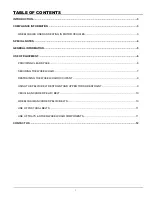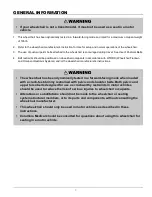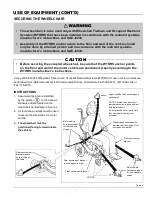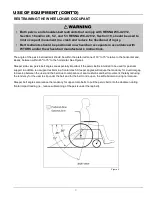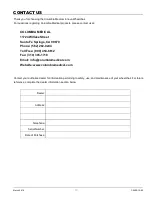
6
PROVIDING CLEAR SPACE
• The wheelchair MUST be in a forward facing position during travel in a motor vehicle.
The recommended clear zones for wheelchair seated occupants restrained by BOTH pelvic and upper torso belt(s)
and ONLY by a pelvic belt are shown in the diagrams and described below.
The frontal clear zone (FCZ) is measured from the frontmost point on an occupant’s head and is 25.6 inches with
pelvic and upper torso belt(s).
The frontal clear zone may not be achievable for wheelchair seated drivers.
The rear clear zone (RCZ) of 17.7 inches is measured from the rearmost point on an occupant’s head.
The estimated seated height from the ground or fl oor to the top of the wheelchair-seated occupant’s head ranges from
approximately 47 inches for a small adult female to about 61 inches for a tall adult male.
Heeding these warnings will reduce the likelihood of serious and fatal injuries to
occupants seated in wheelchairs who are involved in crashes, emergency vehicle
maneuvers and will increase safety during normal travel.
• Vehicle interior components that cannot be removed from the clear zones of Figure
1, or near the wheelchair occupant space at a level that may be contacted by a
wheelchair occupant’s head during a side-impact collision or vehicle rollover, should
be padded with material that complies with FMVSS 201.
•
Suffi cient forward and rearward clear space should be provided around the
wheelchair occupant. See Figure 2. The forward clear-space zone (FCZ) needs to be
larger when a shoulder-belt restraint is not used.
USE OF EQUIPMENT
NOTES: The rear clear zone is measured from the
rearmost point on an occupant’s head. The front clear
zone is measured from the frontmost point on an
occupant’s head.
Seated Head Height (HHT) ranges from about
1200 mm (47 inches) for a small adult female to about
1550 mm (61 inches) for a tall adult male.
FCZ = 650 mm (25.6 inches) with upper torso restraint
= 950 mm (37.4 inches) with only pelvic restraint
RCZ = 450 mm (17.7 inches)
NOTE: It is strongly recommended that both pelvic
and upper-torso belts be used.
NOTE: The frontal clear zone may not be achievable for
wheelchair-seated drivers.
Figure 1


